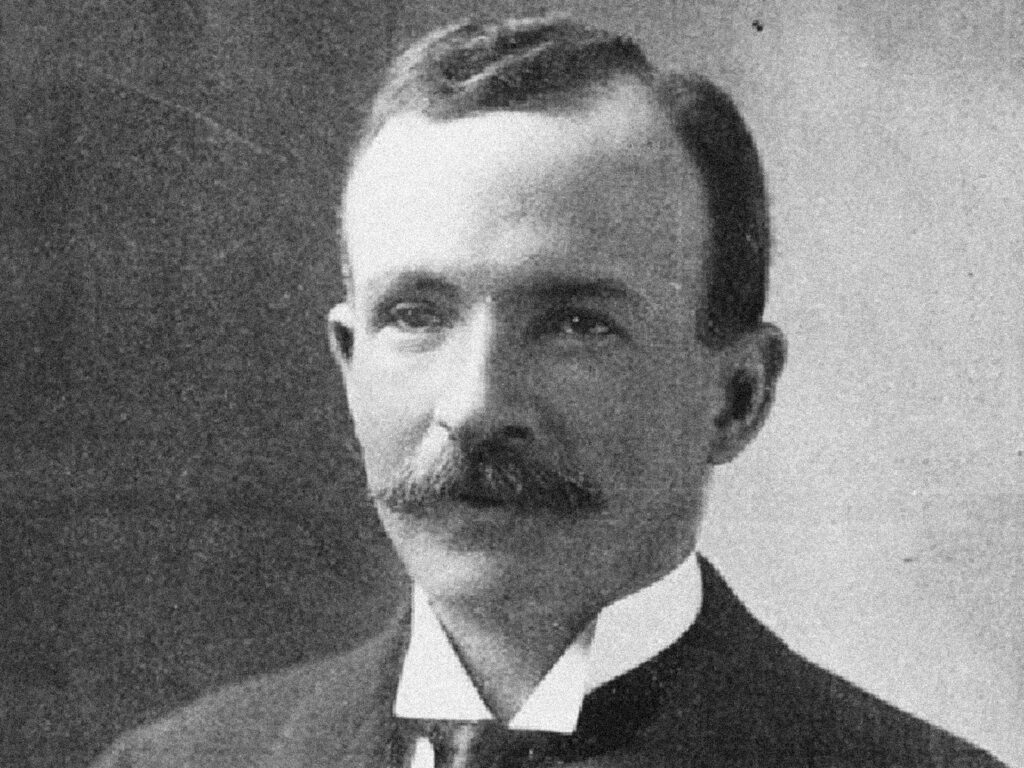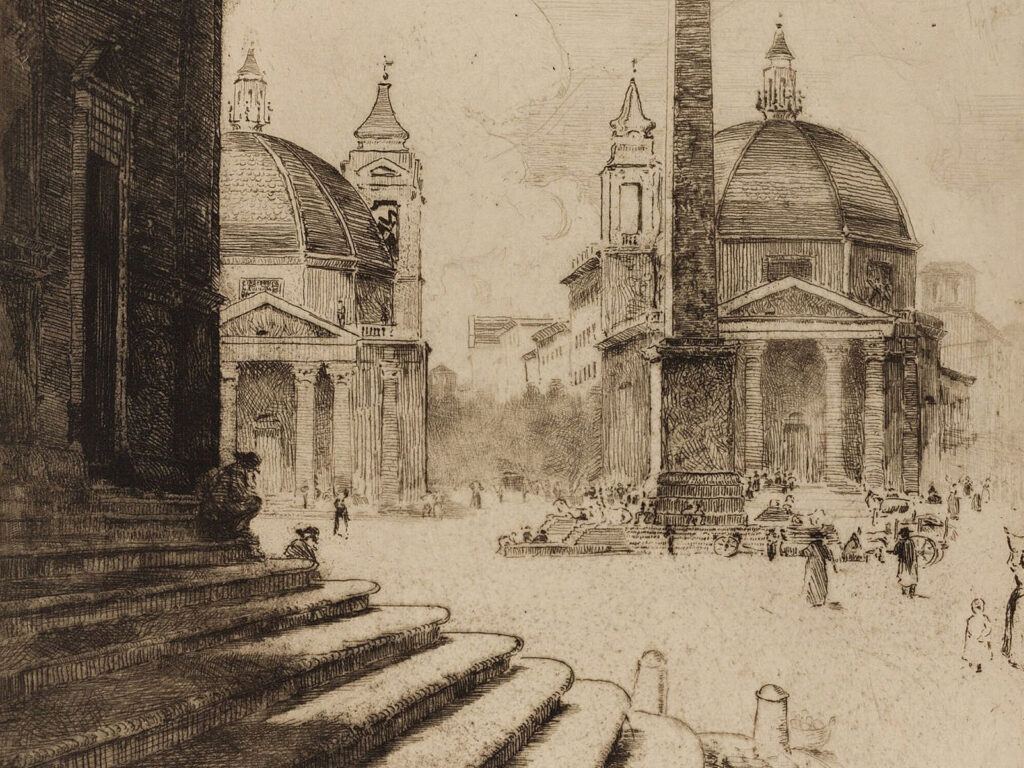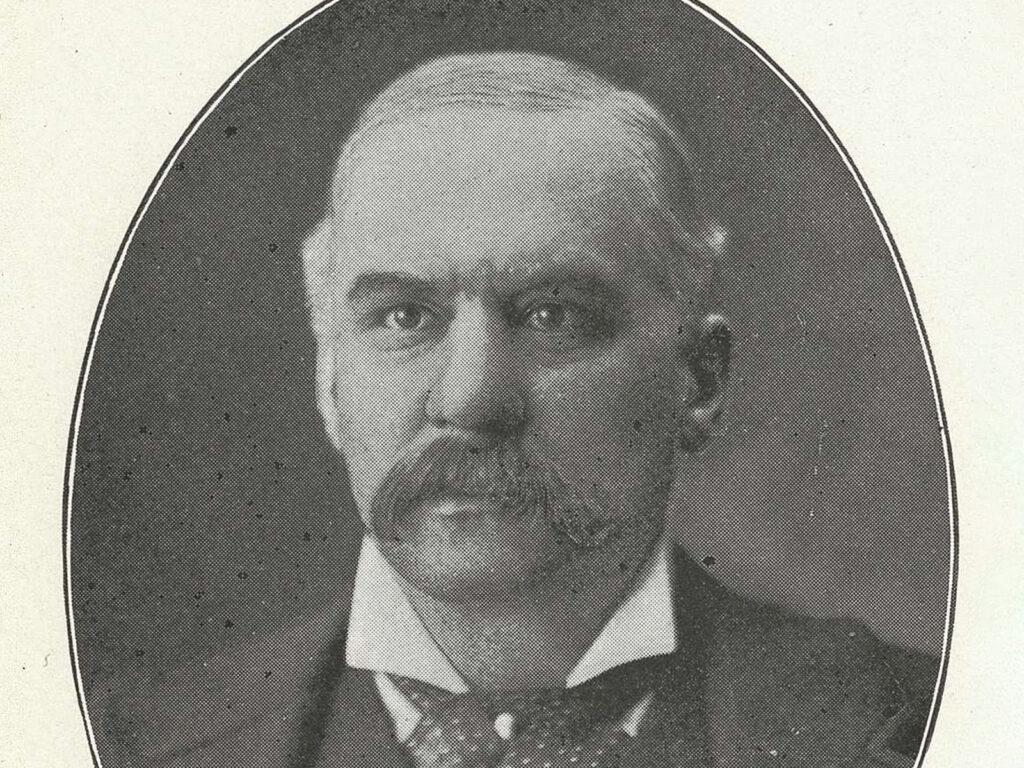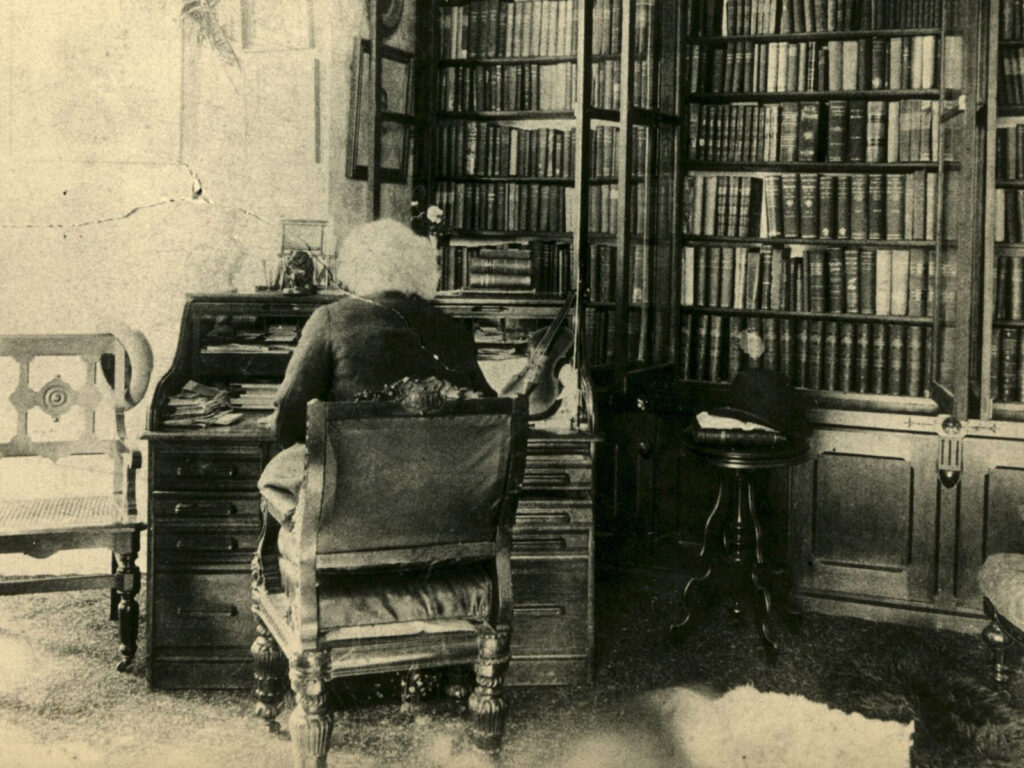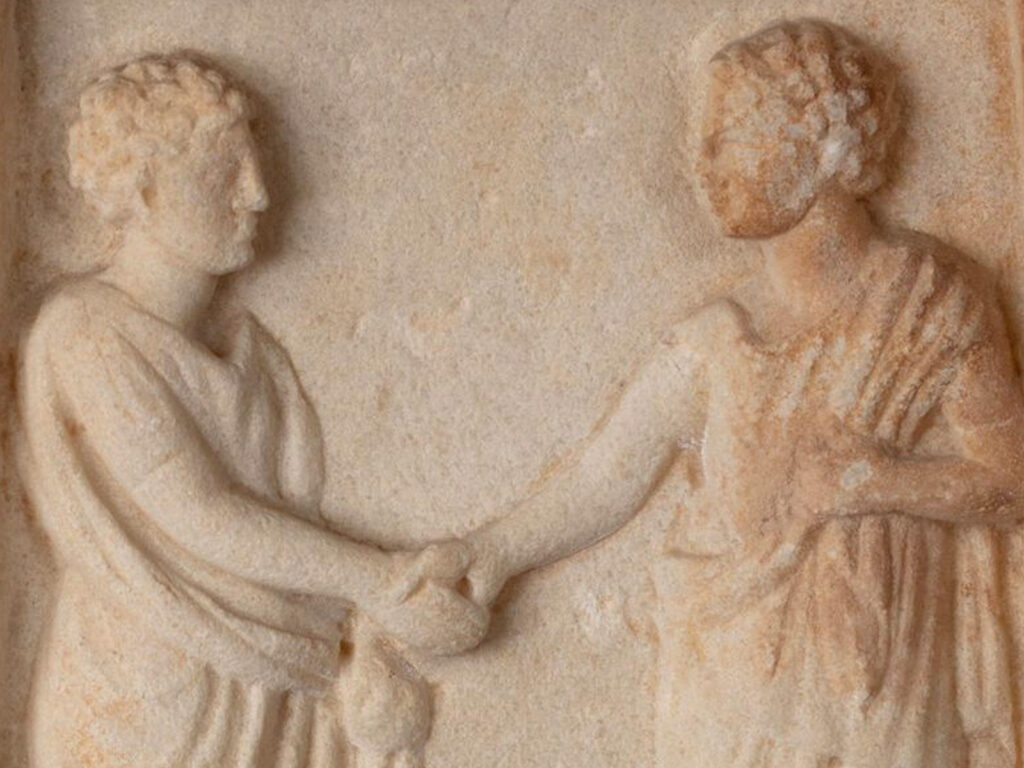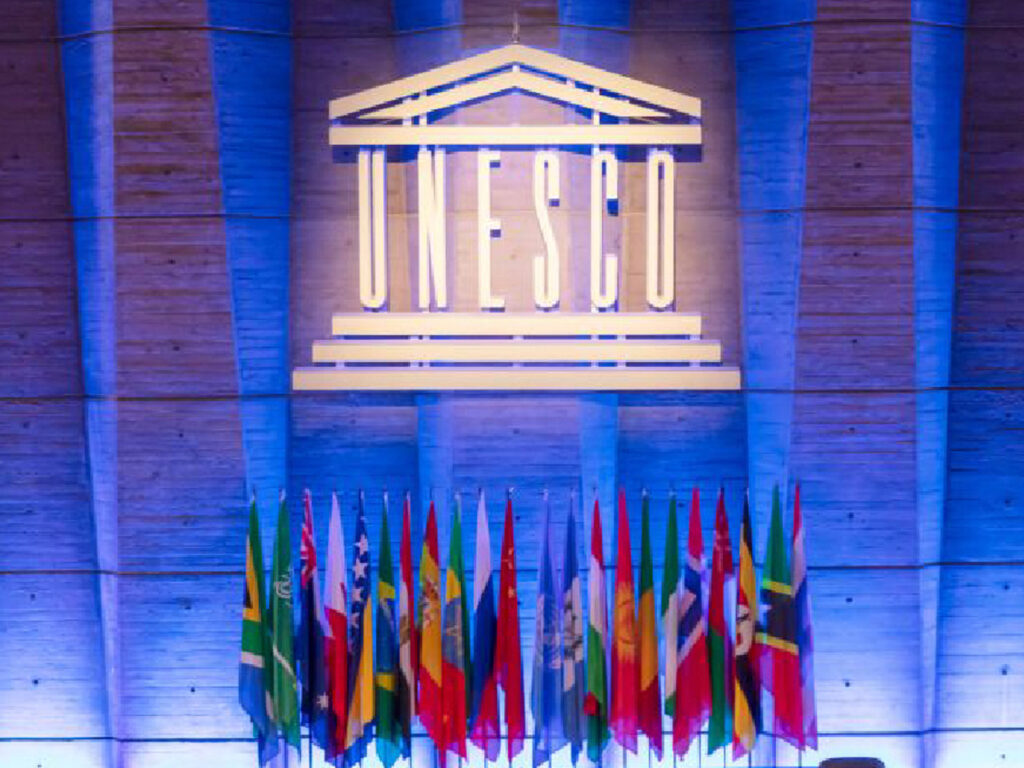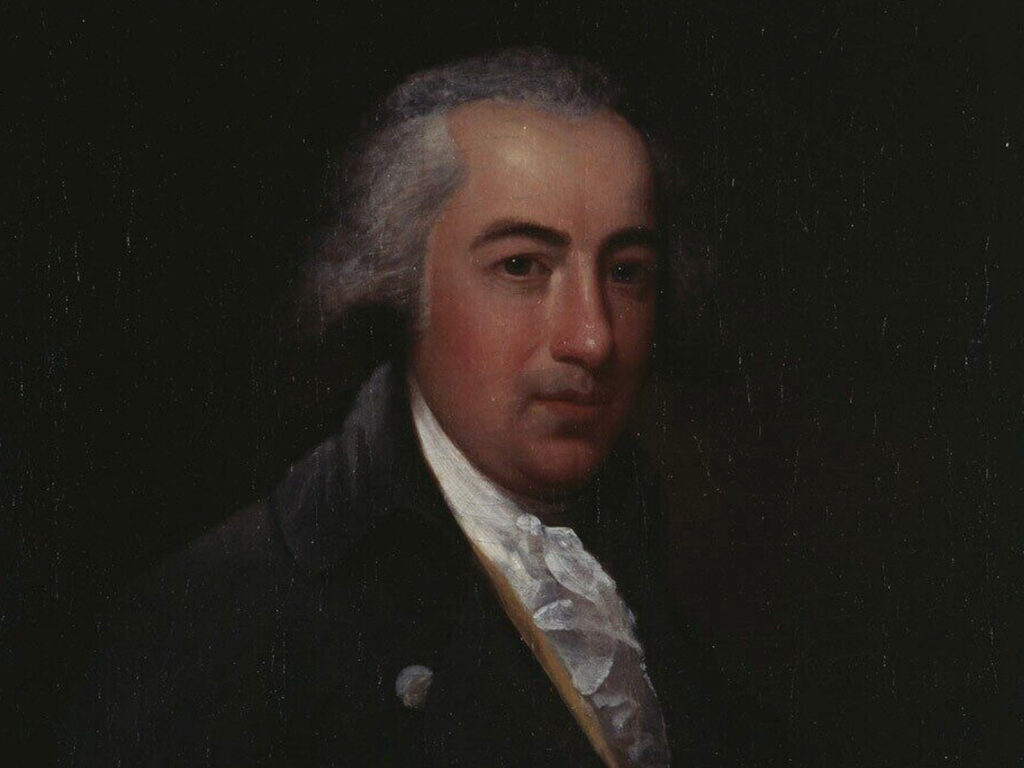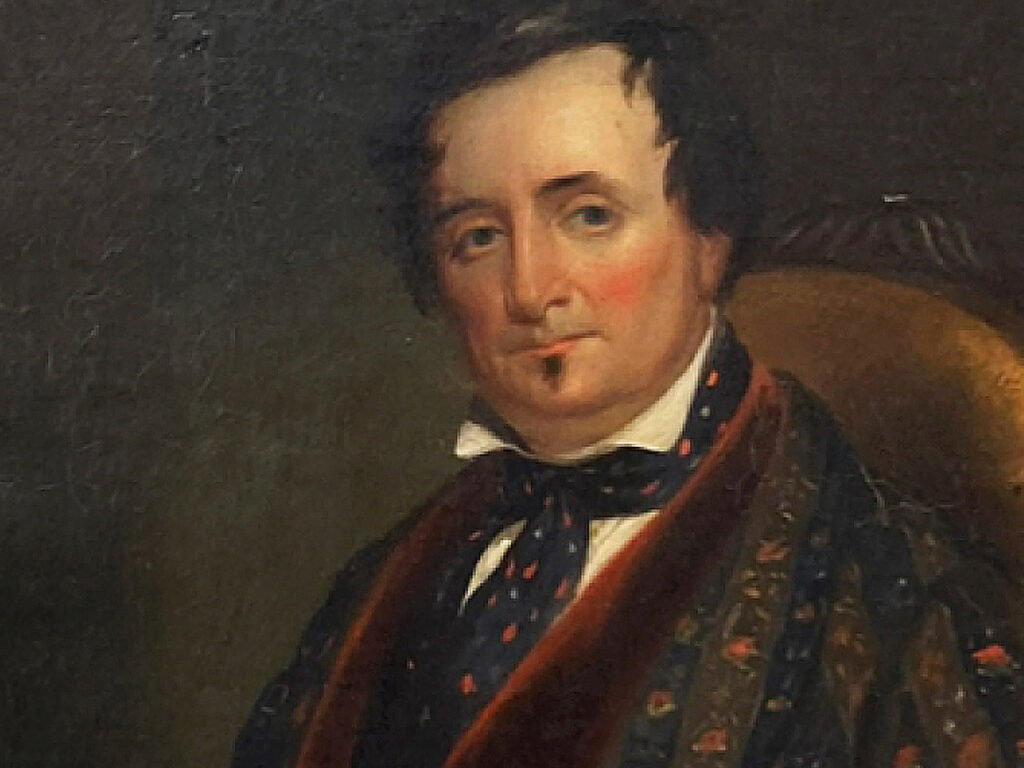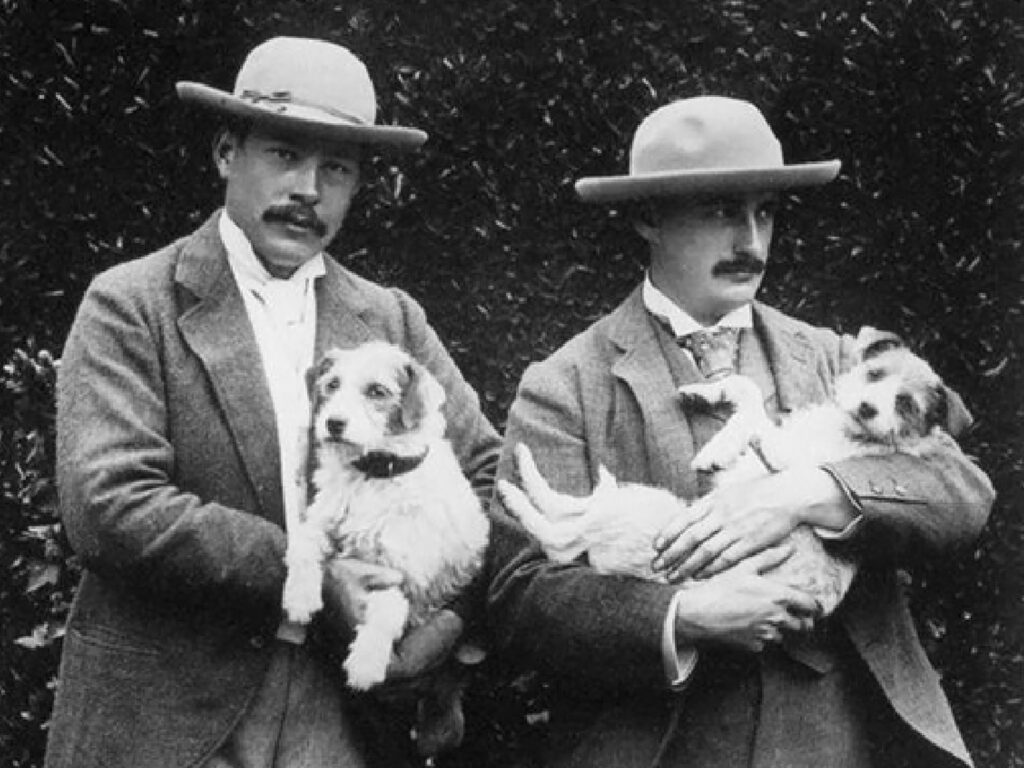In 1891, sisters Mary Sophia Walker (1839–1904) and Harriet Sarah Walker (1844–1898) envisioned a new building for Bowdoin College to be “entirely devoted to art.” Commissioned in memory of their uncle, Theophilus Wheeler Walker (1813–1890), and completed in 1894, the Walker Art Building remains the home of the Bowdoin College Museum of Art. The sisters’ vision for its Renaissance Revival design drew upon their life experiences and forays into the world of the ancients and, especially, their intimate experience with and admiration for their villa, Gore Place, one of America’s most remarkable neoclassical estates. They had a broad passion for the past and a sense of the Mediterranean’s place within that history.
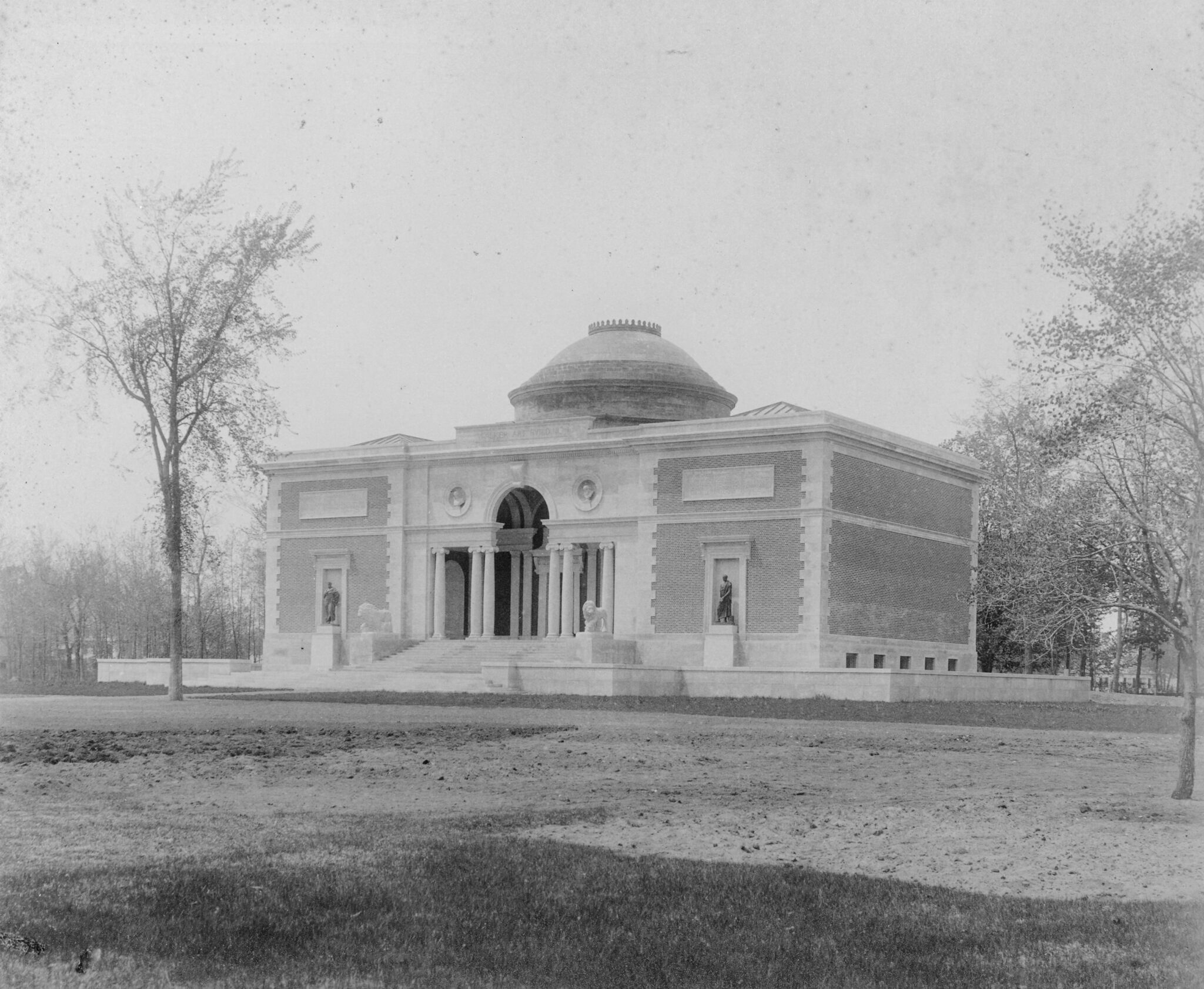
The Walker Sisters and Classicism in Nineteenth-Century New England
Laura F. Sprague“Walker Art Building, Southwest View”, Local Call Number 2944. Courtesy of the George J. Mitchell Department of Special Collections & Archives, Bowdoin College Library, Brunswick, Maine.

Gore Place, Waltham, Massachusetts, a neoclassical estate built 1806 and occupied by the Walker sisters from 1866 until 1904. The south elevation, visible here, features an elliptical facade. Photo courtesy, Gore Place Society.

In Clérisseau’s drawing at Bowdoin, the vaulted interior of an imaginary Roman building features arched doorways and clerestory windows, which flood the interior with light. Charles-Louis Clérisseau, Interior of a Roman Building, Figures Carrying the Body of a Man, ca. 1750–1800, gouache within black framing lines on paper, Bowdoin College Museum of Art, Gift of George and Elaine Keyes, 2014.17.
View object recordBuilt in 1806 in Waltham, Massachusetts, Gore Place was an American ferme ornée, an ornamental farm, where the aesthetics of architecture and landscape design were united with agricultural reform. Christopher and Rebecca Payne Gore had keenly observed neoclassical buildings in England and France during Christopher’s diplomatic work on behalf of the new American republic. While in France, they became acquainted with the architect Jacques-Guillaume Legrand (1753–1807) who, with Rebecca Gore, is credited with the villa’s design. Legrand had absorbed this style during his academic training as well as through his father-in-law Charles-Louis Clérisseau (1721–1820), the architect, archaeologist, and artist who advanced the adoption of the classical taste in France. Clérisseau’s skilled drawings of ancient buildings, real and imagined, help shape neoclassicism, and his interactions with Thomas Jefferson brought the style to the United States.
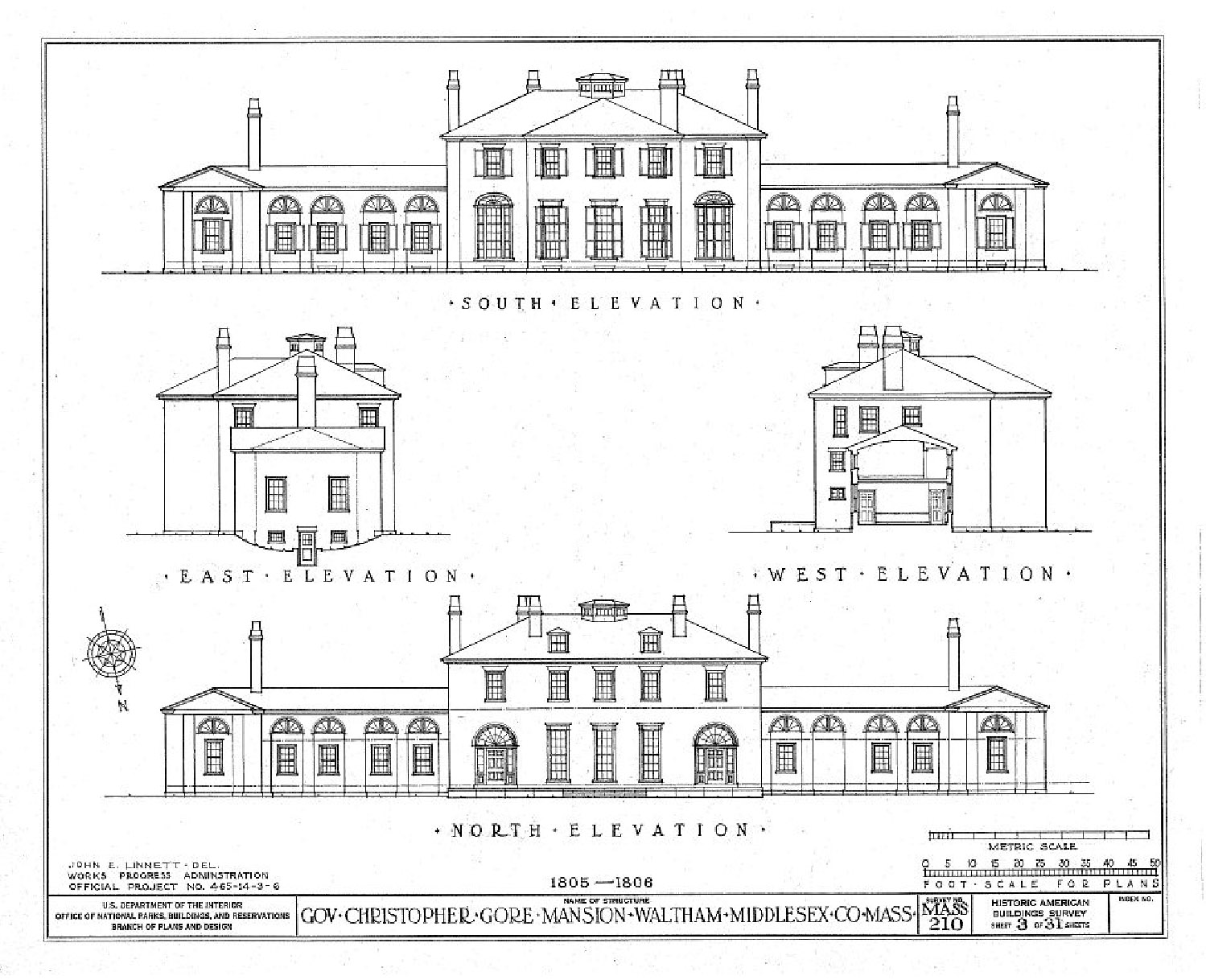
Measured drawings for Gore Place [1935], Historic American Buildings Survey, Library of Congress.
Theophilus Walker took occupancy of Gore Place in 1845, possibly attracted to the estate, in part, because his brother Nathaniel’s wife, Susan Grant Walker, was Christopher Gore’s great niece. The Walker sisters joined him there in 1866 after their mother’s death. For the rest of their nearly forty years, the Walker sisters were ensconced in their neoclassical brick villa. They lived daily with its symmetrical proportions, hemispherical spaces, and the quality of its light, derived from architectural principals of Roman buildings. Notable classical elements also include hyphen arcades, which extend from the central block and evoke Roman baths (with the east hyphen appropriately accommodating a bathing chamber). Both arcades terminate in pavilions derived from Greek temples, a form associated with Athena, goddess of wisdom; the east pavilion held the library. In the main block, arched, fan-lit doorways flanked the full-length windows, flooding the two-story hall with light. More ephemeral interior elements further highlighted the classical theme, such as French wallpaper featuring a Roman drinking cup (or kylix) and a pitcher (or oinochoe). Behind the main hall, the two-story oval parlor created a hemispherical wall in the main hall and an elliptical facade on the south elevation. An oculus crowned the building, illuminating interior second-floor spaces.

Grillet et Cie, Naples, Italy, Mary Sophia Walker, c. 1875, photograph. Courtesy, Gore Place Society.
The Walker sisters traveled and developed their collection of European and American art as well as that of other world cultures. Through Theophilus and his merchant vessels trading in the Mediterranean, the sisters are believed to have taken the Grand Tour of Europe during the 1870s to see the great classical sites, especially of Italy. It was an opportunity to gain exposure to the architectural and cultural wonders of the ancient world, just as James Bowdoin III did in the 1770s. Mary Sophia’s photograph taken by Grillet & Cie in Naples, Italy, dates to this time. Paintings of this decade decorated the Walker’s two-story elliptical picture gallery at Gore Place, including the large oil picture, Temple, Aegina, by John Rollins Tilton (1828–1888), who was living and working in Rome. It depicts the Greek temple dedicated to the goddess Aphaia at Aegina. One of the most significant objects there was the twelve-by-fifteen-foot Flemish tapestry depicting a Roman historical narrative. Made in Brussels circa 1600 by Nicaise Aerts, the Conference Between Scipio and Hannibal Before the Battle of Zama illustrates events of the Second Punic War.
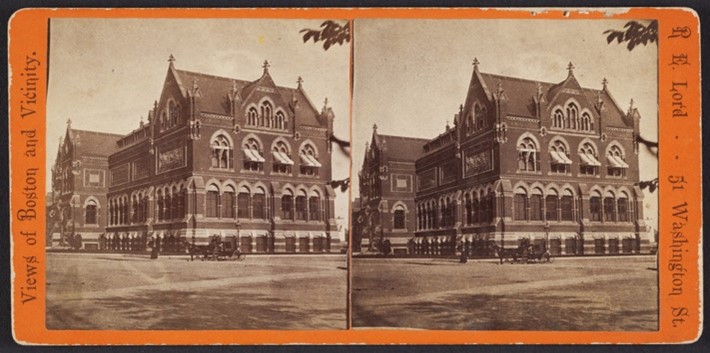
Sturgis & Brigham, Museum of Fine Arts, Copley Square, 1876, designed in High Victorian Gothic style. Courtesy, Historic New England.
The Walker sisters knew the great public buildings of metropolitan Boston derived from medieval and Gothic antecedents. For example, Trinity Church (consecrated 1877) at Copley Square was designed by Henry Hobson Richardson (1838–1886). So recognizable were his massive, medieval-style stone buildings that they became known as Richardsonian Romanesque. Across Copley Square, the Museum of Fine Arts (1876) constructed its first building, designed by Sturgis & Brigham in the High Victorian Gothic style. The Walker sisters, however, eschewed Gothic windows and gabled roofs, looking instead to the ancients for inspiration. Steeped in classical forms of the ancient world at Gore Place, the Walker sisters chose its austere simplicity and the quality of its interior light when they envisioned the Walker Art Building. To achieve their plan, they chose Charles Follen McKim (1847–1909) of McKim, Mead, and White—one of America’s most accomplished architects of the time. In McKim, the Walker sisters found an architect for the Walker Art Building steeped in classical design, evidenced most acutely by his concurrent monumental architectural program for the World’s Columbian Exposition in Chicago. The international fair, held in 1893, recreated the splendor of Rome, Europe’s fabled art city, on 630 acres of reclaimed marshy ground near Lake Michigan. A spectacle of major proportions, the fair’s white plaster buildings in the American Renaissance style—illuminated at night by electric lights—gave the fair its name: the “White City.”
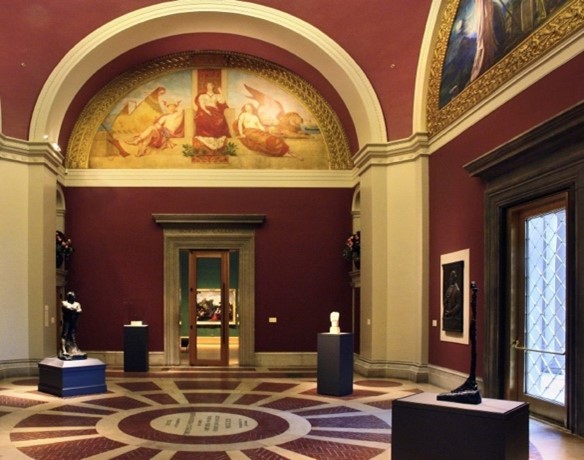
Rotunda, Walker Art Building, with murals visible in the lunettes. Bowdoin College Museum of Art.
Surviving Walker correspondence reveals patrons with a clear vision and an architect who could realize a building whose “color [was] to be light” with a “balanced and symmetrical design” based on Italian Renaissance models. The Walker Art Building’s classical elements—Greek plan, dome, rotunda, loggia, Palladian arch, and sculpture—were drawn from fifteenth-century Florentine architecture, notably the Pazzi Chapel by Brunelleschi and the Loggia dei Lanzi, site of the lion statues, that served as models for Bowdoin College’s own noted examples. Working with McKim, the Walkers selected four artists to paint murals in the lunettes of the monumental domed rotunda. They decided on allegorical representations of great centers of artistic achievement in Western art: Rome, Athens, Florence, and Venice. Visitors arriving through the original main entrance faced Elihu Vedder’s Rome, also called The Art Idea. In the mural, a female deity personifying Rome is seen holding the Greek letters Alpha and Omega. Clockwise, the other murals are Venice by Kenyon Cox, Athens by John La Farge—regarded as one of America’s finest muralists—and Florence by Abbott Thayer. Cox’s Venice Enthroned is flanked by Mercury, the patron of commerce, and a figure representing Painting with her palette. The lion of St. Mark and other Venetian attributes are visible in the background. In his asymmetrical composition, La Farge rendered Pallas Athena (Minerva) drawing a portrait of Nature from life. In Abbott Thayer’s design, influenced by Italian altarpieces, Florence protects the Arts.

Daniel Chester French, Theophilus Wheeler Walker, 1893, bronze bas relief. Gift of the Misses Harriet Sarah and Mary Sophia Walker, 1894.148.
The Walker murals, set off by architectural framework and dark red walls, survive essentially unchanged. By combining architecture and interior mural painting, as found in the great fifteenth-century Italian palaces, McKim created a unified decorative program of the American Renaissance. Two spacious picture galleries flank the rotunda, and on axis with the entrance door, the oval gallery contained the Walkers’ art collection with its ancient art, European and American paintings, and other objets d’art. The bronze tablet of Theophilus Wheeler Walker by Daniel Chester French, one of McKim’s collaborators at the Columbian Exposition and who is perhaps best known for his statue of Abraham Lincoln at the Lincoln Memorial, is the largest and most ambitious of French’s low-relief sculptures. It took pride-of-place in the Walker Gallery on axis with building’s original entrance.

Primato Painter, Red-figure Nestoris (two-handled jar), 450-325 BCE, terracotta. Bowdoin College Museum of Art, Gift of the Misses Harriet Sarah and Mary Sophia Walker, 1895.2.
In purchasing art for Bowdoin College, Harriet and Mary Walker sought the advice of Edward Perry Warren (1860–1928), an eminent antiquities collector who had grown up in Waltham, not far from Gore Place. Greek and Roman ceramics and Roman glass vessels were among the first ancient art objects the Walkers acquired for Bowdoin. Their fateful contact with Warren became an “acorn in the forest,” a seed that inspired his subsequent gifts of nearly six hundred objects which today form the core of Bowdoin’s notable art collection of the ancient Mediterranean world. Through their building and collection, the Walker sisters’ admiration for classicism endures. Visitors’ attention continues to be drawn to the Classical precedents of Greece and Rome, firmly establishing a central role for the ancient Mediterranean world at the Bowdoin College Museum of Art.
Theophilus Walker had held a life-long interest in the art collection of James Bowdoin III, the college’s founding patron. Lillian B. Miller, “The Legacy: The Walker Gift, 1894,” in The Legacy of James Bowdoin III (Brunswick, Maine: Bowdoin College Museum of Art, 1994), 187–215. Letter, Harriet S. Walker to Charles F. McKim, July 6, 1891, Buildings: Correspondence, Walker Art Building, George J. Mitchell Department of Special Collections & Archives, Bowdoin College Library. A dedication to “art purposes” appears in an inscription in the rotunda floor.
Charles A. Hammond, “‘Where the Arts and the Virtues Unite’: Country Life near Boston, 1637-1864” (Ph.D. thesis, Boston University, 1982), 122.
Letter, Christopher Gore to Rufus King, June 20, 1801, cited in Hammond, “Where the Arts,” 122. Extant plans or designs for the house are not known.
See Thomas McCormick, Charles-Louis Clérisseau and the Genesis of Neoclassicism (Cambridge, MA: MIT Press, 1991), 191-99.
W. H. Whitmore, comp., The Genealogy of the Families of Payne and Gore (Boston: Press of John Wilson and Son, 1875), 29–30.
This border has been reproduced and reinstalled by Gore Place Society.
Gore Place is maintained as a public museum by Gore Place Society. For more information, please visit www.goreplace.org. See Laura Fecych Sprague, “Theophilus Wheeler Walker and Gore Place,” in The Legacy of James Bowdoin III, 216–24. For more on the estate’s architectural significance, see Hammond.
The Carte de Visite of Mary Walker is in the collection of Gore Place Society.
The tapestry was given to the Museum of Fine Arts, Boston, through the bequest of Mary Sophia and in honor of Harriet in 1904. link
The American Renaissance, 1876-1917 (New York: The Brooklyn Museum, 1979), 12, 14, 17.
McKim’s emphasis. Letter, Harriet Walker to Charles McKim, July 6, 1891, and letter, Charles F. McKim to Harriet Walker, August 10, 1891, Buildings: Correspondence, Walker Art Building, George J. Mitchell Department of Special Collections & Archives, Bowdoin College Library. Pols, “Walker Art Building 1894,” 81–2.
Patricia McGraw Anderson, The Architecture of Bowdoin College (Brunswick, ME: Bowdoin College Museum of Art, 1988), 43–48. See also Richard V. West, The Walker Art Building Murals: Occasional Papers I (Brunswick, ME: Bowdoin College Museum of Art, 1972).
Originally in the Sophia Walker Gallery on axis with the main entrance, the tablet is now installed in the rotunda. The museum’s bronze roundel of Robert Louis Stevenson by Augustus Saint-Gaudens (1904.29) illustrates another classical form; see Margaret R. Burke, ed., Handbook of the Collections (Brunswick, Me.: Bowdoin College Museum of Art, 1981), 104–06.
In 1929, Sir John D. Beazley honored Warren’s legacy when he observed in his eulogy: "a coin, a gem, a vase, a statuette, would speak of Greece in the heart of Maine; and sooner or later there would be a student whose spirit would require them. There was no hurry: an acorn in the forest.” See Kevin Herbert, Ancient Art in Bowdoin College (Cambridge, Mass.: Harvard University Press, 1964), 8–9.
